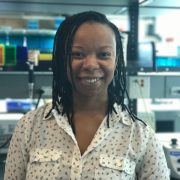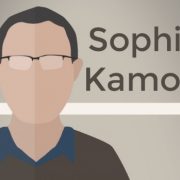Plant Scientist Highlight: Ottoline Leyser
 Why did you originally decide to pursue science and what got you interested particularly in plant hormones?
Why did you originally decide to pursue science and what got you interested particularly in plant hormones?
I have always been interested in how things work. It’s the first thing I find myself asking whenever I see something interesting. Science is a great outlet for that sort of curiosity.
My interest in plant hormones started early, driven by the very unsatisfactory answers to question about how they work in the text books when I first came across them. Not long after, I became gripped by what I consider to be one of the most interesting questions in biology, namely how does a fertilized egg become an adult organism? This is a particularly interesting question in plant biology, where in addition to genetic information, environmental information is folded into the process, such that the adult form of a plant is heavily dependent on the environment in which it is growing. I have been trying to understand how plant hormones contribute to delivering the extraordinary developmental plasticity of plants pretty much ever since.
What values did you learn growing up that you carry into your work today?
Ideas and discussion were a central part of life in my family, along with the support and encouragement to follow my interests.
What do you think are some of the most impactful advance that have come out of your work to date or that you hope to achieve in future projects?
Science is such a collaborative endeavor that I always feel uncomfortable claiming advances from my work- we are all standing side by side and on the shoulders of giants. That said, my group has certainly contributed to our current understanding of auxin signaling in the regulation of gene expression. The pathway turned out to be elegantly short involving just three specific protein families. Despite its simplicity the system immediately offers potential to explain the many responses auxin can elicit in plants.
I am currently very much occupied with trying to understand how the auxin transport network and its self-organizing properties act as a hub to regulate shoot branching. A central part of this work is to understand how the plant hormone strigolactone can act either to promote or inhibit branching depending on the auxin transport status of the plant. Our discovery that strigolactone triggers removal of the PIN1 auxin efflux carrier from the plasma membrane is an important piece in this puzzle and in a computational model of the system can account for the positive and negative effects of strigolactone on branching.
signaling.
What are some examples of unexpected hurdles you have encountered and how did you overcome them?
In research it is always a good idea to expect the unexpected. I find it alarming when people say that their experiment did not give the result that they wanted, or worse still that it did not work because the result was not what they expected. Developing a strong hypotheses, while keeping an open mind is essential.
Starting new projects, challenging current thinking and paradigms, pioneering new techniques takes a lot of creativity. Where do you find inspiration to tackle these new challenges?
If you work in biology, inspiration is everywhere in life in all its “forms most beautiful and most wonderful”, to quote Darwin. Beyond that, I really enjoy finding parallels between the regulatory architectures we work on and almost anything else- road traffic flow, the electric grid, economics, social networks and many more.
You worked on the book Mothers in Science: 64 Ways to Have it All. Why did you choose to start this project and is there anything that surprise you while writing this book?
I assembled “Mothers in Science: 64 ways to have it all” because I was frustrated by the negative messages I frequently encountered about how impossible it was for women to combine a family and a career in science. Many rules were set out, for example how it was essential to wait until you had a tenured position, or how you could not take any time out. While careers in science are certainly not easy for anyone, there is no golden formula or rule set to follow. I knew many women successfully combining their research careers in science with motherhood, and they all were doing it in different ways. It seemed to me that that simple message needed spreading. Combined with the fact that research scientists are well trained for many crucial roles in the public and private sectors, it is important that researchers feel confident to make positive choices about the many career paths available to them rather than feel driven by fear down particular routes.
You can find a downloadable copy of “Mother’s in Science: 64 Ways to Have it All” here and you can follow Dr. Leyser on Twitter at @OttolineLeyser. For more information on Dr. Leyser and her work read this wonderful interview published by Current Biology- Q&A: Ottoline Leyser.
Download the graphic here.









